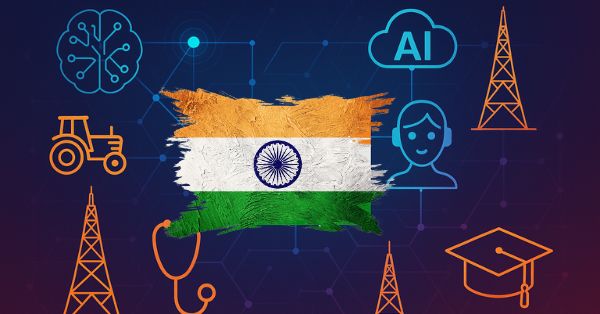India’s telecom sector is poised for a strong financial year, with revenue expected to grow by 12–14% in FY25, fueled by recent and anticipated tariff hikes. However, according to Bharti Enterprises Chairman Sunil Bharti Mittal, sustaining this momentum will require more than pricing strategies—it will demand aggressive investment in AI, R&D, and policy reforms.
Vodafone Tariff Hikes and AI Rollout Fuel FY25 Telecom Growth
As per data cited by The Economic Times, the Indian telecom industry is set to see its revenues climb to ₹3 lakh crore in FY25. This growth comes on the back of tariff increases expected in the second half of the fiscal year. While the average revenue per user (ARPU) has been gradually improving, analysts suggest that more price hikes are necessary for operators to maintain profitability and invest in next-gen technologies.
Major players such as Jio and Airtel are expected to roll out new prepaid and postpaid plans, likely after the ongoing general elections conclude. This gives the industry a timely opportunity to rebalance tariffs without political pressure.
AI Disruption in Telecom: Opportunities and Workforce Challenges Ahead
At the CII Annual Business Summit 2025, Sunil Mittal highlighted the sweeping impact of AI on the economy and employment. He warned that while AI has the potential to enhance productivity and unlock new business models, it also threatens traditional jobs—particularly in sectors like software development.
“Even a layperson can now speak to a machine and get it to write code,” said Mittal, underscoring how GenAI tools are disrupting job markets. In a country with 20 million children aged 6–16, who will soon enter the workforce, the implications are profound.
Mittal stressed that AI adoption is no longer optional for India. Emerging markets must embrace technology to remain competitive, and India must prepare its workforce accordingly.
AI-First Policy Reforms Needed for India’s Telecom Evolution
Mittal didn’t just stop at AI. He called for policy reforms to create an enabling environment for industrial and technological growth. Among his recommendations were improvements to the Goods and Services Tax (GST) regime, a more attractive corporate tax structure, and simplifying the Ease of Doing Business metrics.
“The dream of Viksit Bharat needs acceleration,” he said, urging greater collaboration between the government and private industry to bridge policy gaps and create momentum. This kind of co-creation, Mittal argued, is essential for achieving scalable growth in areas like telecom, digital infrastructure, and deep tech innovation.
India’s Demographic Advantage Must Be Harnessed
India’s young population is its most significant long-term advantage, Mittal asserted. As developed economies age and immigration policies tighten, India could supply the global workforce of the future. However, this potential can only be realized through better collaboration between industry and academia.
Mittal recommended targeted investment in high-demand sectors like green energy, space communication, and next-gen telecom, including 5G and 6G development. These areas not only promise growth but also require a workforce that’s technically skilled and future-ready.
AI and Deep Tech Demand Stronger R&D Backing in Telecom
One of the more pressing concerns Mittal raised was India’s low investment in research and development, which remains below 1% of GDP. He called on the private sector to take the lead in funding deep tech and innovation, arguing that government efforts can only scale with industry confidence and support.
“Our large domestic market gives us scale, but we need intellectual leadership too,” said Mittal. Without substantial R&D funding from private firms, India risks falling behind in global technology leadership.
This call to action is especially relevant in the telecom sector, where innovations in network automation, edge computing, and private 5G are reshaping industry dynamics.
AI and Innovation at the Core of India’s New Telecom Export Strategy
In addition to technological transformation, Mittal urged a reset of India’s trade strategy. He emphasized the need for export diversification and value addition, stating that no raw material should leave the country without being processed or refined.
This shift, he noted, would not only improve trade balances but also support job creation and innovation within the country. By modernizing its trade policies, India could better integrate with global value chains, especially in sectors like electronics, semiconductors, and data centers.
India’s Telecom Industry Evolves with AI, Vodafone Strategy, and Policy Reform
The Indian telecom industry is at a critical juncture. On the one hand, rising revenues and ongoing tariff reforms offer financial stability. On the other, the sector must confront sweeping technological shifts, talent challenges, and an evolving policy landscape.
Mittal’s message was clear: to lead in the next digital era, India must go beyond incremental improvements. Strategic investments in AI, R&D, and telecom infrastructure are essential—not just to grow, but to compete globally.
The push toward monetization, policy alignment, and skills development must now move from boardrooms to implementation. With India’s scale and demographic edge, the opportunity is massive—but only if matched by equal ambition and timely action.







































